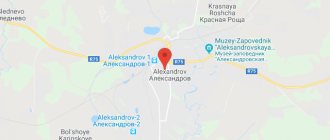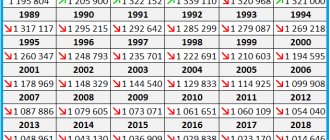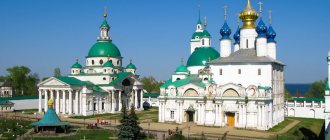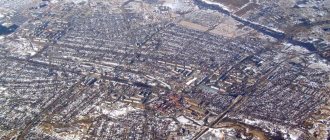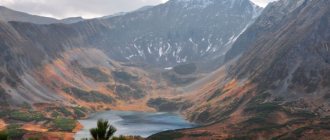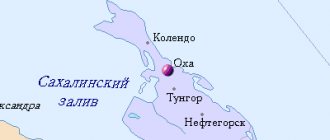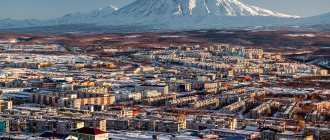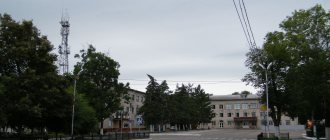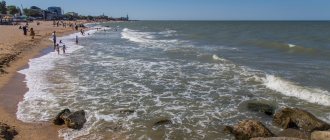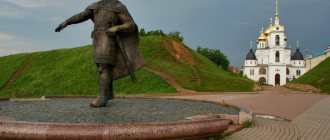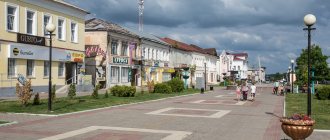Kaluga is the administrative, scientific, industrial, cultural center of the Kaluga region in the Central Federal District of the European part of the Russian Federation, 200 kilometers from the capital - Moscow. The city is located on the Central Russian Upland, on the banks of the Yachenka rivers with its tributary Terepets, Oka and its tributary Kievka, occupies an area of 168.50 square meters. km, is a transport hub.
In honor of the 600th anniversary of the founding of Kaluga, on September 2, 1971, for great labor merits, she was awarded the Order of the Red Banner of Labor.
History of Kaluga
The chronology of Kaluga dates back to 1371. It was then that the settlement was first mentioned in written sources - a charter from the Grand Duke of Lithuania Olgerd, son of Gediminas. During excavations it was discovered that the first settlements on the site of the modern city date back to the 5th-7th centuries BC.
Not everything is so clear with the official date of formation. There are versions of various historians who claim that the city was founded 100 years earlier, no later than 1260. The lack of written evidence is explained by the fact that Kaluga was founded by the Mongol-Tatars on lands belonging to the East Slavic tribes of the Vyatichi, as a Baskak possession, the khan's governorship of the Golden Horde to collect tribute from controlled Russian lands. The settlement occupied a neutral position and had no relation to either the Great Lithuanian or the Moscow principalities, and was not within the scope of their territorial, military or economic interests.
The situation changed after Gediminas and his son Olgerd, through cunning combinations and local armed conflicts with the Horde, partially subjugated the Principality of Kiev (the Kiev prince was a vassal of the Lithuanians, but paid tribute to the Baskaks of the Tatar-Mongols). After this, Kaluga came under the control of the Lithuanians. In 1389, the city became part of the Moscow principality, an outpost of Russian civilization in the southwest (Olgerd complained to Patriarch Philotheus in Constantinople about this, but to no avail). This position of the fortress city remained until the Pereyaslav Rada and the inclusion of Ukrainian lands into the Russian state.
Among the significant historical events we note:
- in the period from 1505 to 1518, Kaluga was an appanage principality, after which it came under the protectorate of the Moscow principality;
- 1606 - the city becomes the residence of False Dmitry I, and later False Dmitry II;
- 1719 - Kaluga was transformed into the administrative center of the newly formed Kaluga province;
- 1748 - the appearance of the Kaluga Icon of the Mother of God, one of the most revered Orthodox shrines, the patroness of Kaluga;
- 08/24/1776 - by decree of the Russian Empress Catherine II, the Kaluga province was created, M.N. Krechetnikov became the first governor;
- On July 5, 1944, the city acquired the status of a regional center, and the Kaluga Region was formed.
Throughout its existence, Kaluga has repeatedly become the scene of fierce hostilities between the Crimean Tatars, Lithuanians, Poles and Russians. The city was of great importance during the Patriotic War of 1812, playing the role of one of the largest logistics bases for the Russian army.
During the Great Patriotic War, the occupation of the city lasted from October (the pedantic Wehrmacht fighters indicated that Kaluga was captured on October 12 at exactly 21:00) to December 30, 1941, during this short time the infrastructure was destroyed, the civilian population was subjected to repression.
During its centuries-old history, Kaluga has been repeatedly subjected to armed intervention. The city burned to the ground several times, the economy fell into decay, the people died out from terrible diseases and hunger. But this pearl of central Russia has always been reborn from the ashes like a phoenix. And now it is a beautiful city, the cradle of Russian cosmonautics, in which industrial power is combined with the Russian soul, hidden in the depths of ancient streets, parks and squares.
Composition of the urban district
| The urban district includes 74 settlements | |||
| № | Locality | Type of settlement | Population |
| 1 | Andreevskoe | village | 174[5] |
| 2 | Argunovo | village | 16[5] |
| 3 | Babenki | village | 47[5] |
| 4 | White | village | 54[5] |
| 5 | Bolshaya Kamenka | village | 31[5] |
| 6 | Verkhnyaya Vyrka | village | 32[5] |
| 7 | Vorovaya | village | 102[5] |
| 8 | Galkino | village | 30[5] |
| 9 | Georgievskoe | village | 22[5] |
| 10 | Gorenskaya | railroad station | 9[5] |
| 11 | Gorenskoe | village | 36[5] |
| 12 | Gorenskoe | village | 22[5] |
| 13 | Town | village | 20[5] |
| 14 | Grigorovka | village | 102[5] |
| 15 | Gruzdovo | village | 27[5] |
| 16 | Domozhirovo | village | 18[5] |
| 17 | Zhelybino | village | 47[5] |
| 18 | Zherelo | village | 39[5] |
| 19 | Animals | village | 56[5] |
| 20 | Zarechye | village | 19[5] |
| 21 | Green | village | 28[5] |
| 22 | Ilyinka | village | 147[5] |
| 23 | Kaluga | city, administrative center | ↘341 986[1] |
| 24 | Kaluga Geological Exploration Party | village | 84[5] |
| 25 | Kanishchevo | village | 1034[5] |
| 26 | Karachevo | village | 113[5] |
| 27 | Kozlovo | village | 13[5] |
| 28 | Kolyupanovo | village | 1154[5] |
| 29 | Kosarevo | village | 27[5] |
| 30 | Krutitsy | village | 138[5] |
| 31 | Lihun | village | 392[5] |
| 32 | Lobanovo | village | 2[5] |
| 33 | Makarovka | village | 2[5] |
| 34 | Malaya Kamenka | village | 9[5] |
| 35 | Maryino | village | 3[5] |
| 36 | Matyunino | village | 142[5] |
| 37 | Peaceful | village | 409[5] |
| 38 | Mstikhino | village | 2658[5] |
| 39 | Muratovka | village | 310[5] |
| 40 | Muratovsky crushed stone plant | village | 541[5] |
| 41 | Nekrasovo | village | 191[5] |
| 42 | Nizhnyaya Vyrka | village | 9[5] |
| 43 | Nikolo-Lapinosovo | village | 23[5] |
| 44 | Novozhdamirovo | village | 80[5] |
| 45 | Novoselki | village | 14[5] |
| 46 | New | village | 115[5] |
| 47 | Oreshkovo | village | 20[5] |
| 48 | Petrovo | village | 71[5] |
| 49 | Pioneer camp "Star" | locality | 0[5] |
| 50 | Pletenevka | village | 531[5] |
| 51 | Substation Kolyupanovskaya | village | 29[5] |
| 52 | Pochinki | village | 13[5] |
| 53 | Suburban forestry | village | 101[5] |
| 54 | Priokskoe forestry | village | 91[5] |
| 55 | Puchkovo | village | 313[5] |
| 56 | Christmas | village | 119[5] |
| 57 | Horns | village | 8[5] |
| 58 | Rosva | village | 1536[5] |
| 59 | Mountain ash | village | 131[5] |
| 60 | Sivkovo | village | 35[5] |
| 61 | Sokorevo | village | 14[5] |
| 62 | Pinery | village | 47[5] |
| 63 | Saved | village | 32[5] |
| 64 | Timoshevo | village | 142[5] |
| 65 | Tinino | village | 240[5] |
| 66 | Tikhonova Pustyn | railroad station | 610[5] |
| 67 | Uvarovo | village | 0[5] |
| 68 | Uvarovo-Pochinkovsky quarry | village | 42[5] |
| 69 | Ugra | village | 26[5] |
| 70 | Chizhovka | village | 74[5] |
| 71 | Mines | village | 1[5] |
| 72 | Shopino | village | 1976[5] |
| 73 | Yuryevka | village | 20[5] |
| 74 | Yaglovo | village | 27[5] |
Climate of Kaluga
The climate of Kaluga is temperate continental, with pronounced seasons, which is typical for central Russia. The city is moderately hot and humid in summer and cold in winter.
The average temperature in summer is + 17°C. The average temperature in winter is 10° C, but taking into account the predominance of westerly winds with an average speed of 3-4 m/sec, the frost is perceived differently and feels like everything else - 15° C.
The snow cover is stable, which provides ample opportunities for winter recreation, for example, forest skiing. Recently, due to global warming, the region has been characterized by autumn that lasts until mid-December, but there have not yet been snowless winters.
The average annual temperature in Kaluga ranges from + 3.5 ° C to + 4.5 ° C, the warm period lasts from 215 to 220 days. The average annual precipitation is 600-700 mm and, depending on the year, can range from 356 to 1000 mm.
In general, the climate of Kaluga is favorable for living, given its physical and geographical location.
Street libraries
Street libraries in Kaluga are small cabinets in which any sympathetic people store books. Every city guest or local resident can take the work home to read. Moreover, it is not necessary to return printed materials. If you like a copy, you can keep it forever, and there will be no punishment for this.
This innovation in Kaluga is borrowed from Europe. It was there that such bookcases gained popularity among people. In Kaluga, the first street library opened on June 3, 2013. You can find it on the corner of Suvorov and Lenin streets, near the People's House.
Kaluga is famous for its street libraries
The locker is on a pillar. The appearance of the library resembles a small house, inside of which there are books on shelves. After this, similar objects began to appear throughout the city. The lockers do not have a uniform design. They all vary in size, color and texture.
Near the Temple of the Evangelists there is a religious street library. In it you can take spiritual literature, albeit of a Western faith.
This idea took root among people, and they gladly began to bring their books to public libraries. However, a confrontation began with the local poor residents of Kaluga. At night they began to steal literature in order to hand it over to waste paper. Because of this, many lockers are empty.
Ecology of Kaluga
The ecology in Kaluga is moderate. On the one hand, we note the significant negative impact of 530 enterprises, urban transport and non-stationary sources (construction sites, parking lots, etc.) on the environmental situation. Let us note the following points:
- almost all industrial facilities are located on the outskirts of the city;
- only 9 large plants and factories exceed emission standards;
- Urban transport emissions are 3 times higher than industrial emissions.
Therefore, the situation with atmospheric emissions is moderate. Although the city took only 72nd place in the rating of environmental development of Russian cities for 2013.
The statistics are as follows:
- the total volume of emissions of harmful substances into the atmosphere averages 8.5 thousand tons;
- the number of types of harmful substances is about 250 (methane, nitrogen dioxide and carbon monoxide predominate - about 70% of the total volume).
It’s easy to breathe, largely thanks to the large number of green spaces in the city and its surroundings, the famous and legendary Kaluga Forest, where oak grows - the same age as Kaluga.
But the situation with water resources and water consumption is more complex, largely due to uncontrolled discharges of storm water. Four rivers flow within the city limits - Oka, Terepets, Kievka, Yachenka, plus the Yachenskoe reservoir. But swimming in the city is not recommended. The townspeople spend their summer holidays on the lakes.
The water in Kaluga springs also often does not meet sanitary and hygienic standards.
Sweets
Kaluga is famous not only for its dough, but also for its gingerbread. This treat has won the love of local residents and city guests. Craftsmen made sweets of an unusual appearance - they painted and decorated them. So, you could order gingerbread for a wedding or other festive occasion.
It was customary to give heart-shaped gingerbread cookies to relatives or loved ones on name days. But the treat in the form of a cockerel was a talisman for the house against fire. It is not uncommon for the surface of sweets to be decorated with inscriptions of toasts and proverbs. The city's local history museum has a large collection of gingerbread products.
In the 1970s the fame of Kaluga gingerbread spread throughout the USSR. It was brought as a souvenir. At the same time, this product is awarded the State Quality Mark.
When visiting Kaluga, you can buy original gingerbread, made according to an old recipe, at the Kaluga Souvenirs enterprise. More than once they have received prizes in competitions about the best products in this area. In 2022, gingerbreads such as “Sweet Miracle” and “Souvenir” are popular.
Population
The population in Kaluga as of January 1, 2014 was 350.412 thousand people. Over the past 10 years, this indicator has been in an inert state and changes insignificantly.
Characteristic demographic features of the city:
- negative migration balance (most residents of Kaluga and the region prefer to work and live in Moscow, only 2.5 hours by train, in 2014 the situation stabilized and there was a trend towards positive dynamics, thanks to labor migrants and refugees);
- low birth rate and high death rate (the death rate exceeds the birth rate by 1.3 times);
- the excess of the female population over the male population, especially in the age category of 30 years and older;
- the average age of city residents is 40 years, characterized by the rapid aging of the city’s population;
- average life expectancy is 68.5 years.
- national composition - Russians predominate, Ukrainians, Armenians, Belarusians, Tatars, minor diasporas of Gypsies, Azerbaijanis, Jews, Mordvins, Moldovans and representatives of a number of other nationalities are widely represented.
In general, the demographic situation in Kaluga is typical for most cities in the Central Federal District.
The future of Kaluga is graduates of city schools
The population of Kaluga, or what do Kaluga women lack?
It would be tempting to pronounce the axiom that water is life and connect its quality with the demographic decline, but there is no point in pulling a dubious relationship by the ears if these are problems common to all of Russia. According to data at the beginning of 2014, the number of residents of Kaluga is 334,191 people.
The oblique one especially does not favor men. Nobody sings anymore that “for every ten girls, according to statistics, there are nine guys”; the statistics are much worse, especially for women after 30, when the number of men of the same age begins to gradually decrease. Those who are still alive and remain free do not aspire to the role of a companion; in the light of the space brand, they can only check the weather in the house from time to time, like a weather balloon.
City holiday: Kaluga is 640 years old. Parade of strollers (space cradles)
There is one remarkable indicator in demographics - the average age, in Kaluga it is 40 years. This is an excellent thing to do - to average, add up a one-year-old baby with a 79-year-old grandfather, divide it in half, and get an average age of 40 years, but the number of children and adolescents according to the census results has decreased, and the number of residents with the interesting indicator “over working age” has increased.
The educational level of Kaluga residents is not bad, it’s not for nothing that for so many years three serious state universities (pedagogical, a branch of the Bauman Moscow Higher Technical School and a financial and economic university) have been thoroughly hammering knowledge into their graduates. Those without money went to work as teachers, engineers and cashiers in stores (it is known that financiers know how to count money, but not everyone knows how to earn it). The smart ones joined the ranks of officials (most of the bureaucratic elite are pedagogical graduates), and the resourceful ones built businesses.
The building of Kaluga State University (formerly pedagogical) on the street. Lenin
The increase in the number of universities to sixteen and the possibility of paid education have increased the chances of anyone who wants to receive the coveted diploma, especially since there are enough places where non-core higher education is required, for example, a market, stalls with Chinese goods, or jobs advertised by the governor. But is it really bad if a turner or mechanic has an education from a humanities academy, a Slavic institute, a tourism academy, or a state university that “lost” the word “pedagogical” in its name in 2010?
Famous people
Tsiolkovsky
The modern city claims to be the cradle of Russian cosmonautics, the eye to space, and even cosmonautics city. From 1982 to 1935, the world-famous Russian scientist and inventor, founder of modern cosmonautics K.E. lived in Kaluga. Tsiolkovsky.
He was not a native of these places and at one time lived in Vyatka and Ryazan, but the residents bask in the rays of the world's luminary and even claim that only here he was able to achieve such results.
Many famous people have lived during its centuries-old history:
- False Dmitry II (“Kaluga (Tushinsky) thief”) - was in Kaluga from 1609 to 1610, when he was killed while hunting in the suburbs;
- Maria Mniszek - Polish, wife of False Dmitry I and False Dmitry II;
- Krechetnikov M.N. - first governor of the Kaluga province.
Map of Kaluga with streets and houses
Looking at the street map of Kaluga, you don’t notice any small streets. It seems that the whole city is cut up by long large avenues and streets. There are an unusually large number of significant city arteries here. Among them:
- st. Lenin
- st. Nikitina
- st. Moscow
- st. Tula
- st. Stepan Razin
- st. Lunacharsky
It will be difficult to get lost. Kaluga has a very convenient and simple layout of the territory.
Economy of the region and city
The Kaluga region is one of the most economically developed regions of the Russian Federation and leads in terms of industrial production rates in many sectors of the national economy.
The industry is characterized by high-tech production. There are about 2,700 enterprises in the region. Main industries:
- mechanical engineering and metalworking are key industries for the region;
- chemical;
- light.
The main areas of development are the automotive and pharmaceutical clusters. Their uniqueness lies in the fact that production is created practically from scratch.
The following large transnational holdings operate in the Kaluga region and Kaluga:
- Novo Nordisk A/S;
- General Electric;
- Samsung Group;
- Menarini Group (Berlin-Chemie/Menarini);
- STADA AG (STADA CIS);
- Continental AG;
Investments
Kaluga and the Kaluga region, thanks to their scientific and industrial potential, favorable geographical location and adopted legislation aimed at the development of high-tech sectors of the national economy and the formation of 10 technology parks and the special economic zone "Ludvino", are distinguished by a high degree of investment attractiveness and a favorable investment climate.
In terms of investment in fixed capital, the region confidently ranks first in the Central Federal District, in terms of foreign direct investment it ranks second in the Central Federal District and third among all regions of the Russian Federation.
Enterprises
In Soviet times, Kaluga was a large machine-building center, specializing in the production of machinery and equipment. Currently, the industrial potential has been preserved and is being revived thanks to investments, including foreign ones. Technoparks “Grabtsevo”, “Rosva” and “Kaluga-Yug” have been created within the city and its suburbs.
The automotive cluster is actively developing in these industrial zones (Volkswagen, Skoda, Volvo, Mitsubishi, Renault, Peugeot and Citroën cars are assembled).
Industrial structure of Kaluga:
- mechanical engineering – 46%;
- food industry – 35%;
- energy – 13% (Kaluga Thermal Power Plant);
- light industry – 1.5%.
In this regard, Kaluga has recently been called nothing less than “Russian Detroit”.
Average salary by profession
The minimum salary in settlements of the Kaluga region is 11,280 rubles. The average monthly (nominal) is 41,204. In reality, Kaluga residents on average earn almost 30 thousand rubles per month.
Salary indicators in the most popular areas of employment in Kaluga
The city is actively constructing new residential complexes. In this regard, the most popular industries are construction and real estate.
You can find out about salaries in Russia by region by following the link.
The most popular industries in which residents are employed
| Industry | Salary (thousand rubles per month) |
| Construction | 48 |
| Transport | 46,7 |
| Agriculture | 45,6 |
| Production | 45,7 |
| Top management | 43 |
| Show Business | 41 |
| Medicine | 40 |
| Real estate | 36,7 |
| Engineering | 36 |
| 34,3 |
average salary
| Period | Average salary (thousand rubles per month) |
| June 2021 | 25,9 |
| July 2021 | 26 |
| August 2021 | 29,2 |
| September 2021 | 27,7 |
| October 2021 | 32 |
| November 2021 | 30,7 |
| December 2021 | 30,8 |
| January 2022 | 31,6 |
| February 2022 | 30 |
| March 2022 | 32,7 |
The highest demand in the city is for drivers of various categories and secretaries.
The most in-demand professions in 2022
Demand for professions as a percentage
| Profession | Number of vacancies |
| Driver | 447 |
| Secretary in the office | 261 |
| Process engineer | 231 |
| Salesman-cashier | 185 |
| Internet manager | 164 |
| Store manager | 115 |
| HR specialist | 112 |
| Taxi driver | 107 |
| Online store manager | 102 |
More information about the labor market in Russia.
Top 10 paid professions
| Profession | Average salary (thousand rubles per month) | |
| 1 | Welder | 97 |
| 2 | Sewing equipment adjuster | 83 |
| 3 | Argon welder | 81 |
| 4 | Relay controller | 80 |
| 5 | Electrical fitter | 74 |
| 6 | Minibus driver | 72,5 |
| 7 | Carousel turner | 70 |
| 8 | Driver category E | 70 |
| 9 | Machine operator/setter | 66,8 |
| 10 | CNC operator | 66,8 |
How much does a doctor earn?
A doctor in Kaluga earns about 40 thousand rubles a month.
Average income of doctors in 2021-2022.
| Period | Average salary (thousand rubles per month) |
| June 2018 | 40 |
| July 2018 | 40 |
| August 2018 | 40 |
| September 2018 | 45 |
| October 2018 | 45 |
| November 2018 | 45 |
| December 2018 | 45 |
| January 2019 | 45 |
| February 2019 | 50 |
| March 2019 | 50 |
How much does a teacher earn?
The average salary of a teacher is about 16 thousand rubles per month.
Average teacher salary
| Period | Average salary (thousand rubles per month) |
| June 2018 | 17 |
| July 2018 | 16 |
| August 2018 | 18 |
| September 2018 | 18 |
| October 2018 | 18 |
| November 2018 | 14,5 |
| December 2018 | 13 |
| February 2019 | 20 |
| March 2019 | 20 |
Find out more about teacher salaries in Russia.
How much does the seller get?
The average salary of a salesperson is about 22 thousand rubles per month.
Average salesperson salary
| Period | Average salary (thousand rubles per month) |
| June 2018 | 22 |
| July 2018 | 22,1 |
| August 2018 | 23 |
| September 2018 | 22 |
| October 2018 | 22 |
| November 2018 | 22 |
| December 2018 | 20 |
| January 2019 | 22 |
| February 2019 | 23 |
| March 2019 | 23 |
Construction in Kaluga
The construction industry in Kaluga began to develop in the 2000s. The pace of construction is insignificant and subject to significant fluctuations. In recent years, due to the implementation of large investment projects in the industrial sector, there has been a tendency to increase the volume of commissioning of commercial and residential real estate.
Modern houses in Kaluga
The characteristic features of the construction industry in Kaluga are:
- demolition of dilapidated one- and two-story housing in the central part of the city, which is sometimes of historical value;
- construction of residential real estate in areas as close as possible to technology parks and commercial real estate in the center;
- construction of rented housing in order to compensate for the high cost of square meters, for example, a complex of dormitories in the Grabtsevo technology park.
In 2014, 190,000 sq. m. were commissioned in Kaluga. m of housing, which is 14% less than in the same period last year. On average, there is 0.88 sq.m. per city resident. 55 residential buildings and complexes are being built, this is 6,000 apartments and about 372,000 sq.m., in particular residential complexes:
- Rainbow;
- Pravgorod;
- Crystal;
- Solar.
New buildings are mainly represented by brick and monolithic houses of various heights, including ten-storey high-rise buildings and mid-rise buildings with individual heating.
The average area of apartments in new buildings is from 30 to 100 sq.m. The main offers are one-, two-, three-room apartments.
Cost of new buildings For a number of subjective and objective reasons, in terms of cost per square meter on the primary housing market, Kaluga occupies one of the first places in the Russian Federation according to the assessment of the guild of realtors, second only to Moscow, Yekaterinburg, Khabarovsk and St. Petersburg. In the sales structure, the primary market is significantly inferior to the secondary residential real estate market.
The city ranks second in terms of rising real estate prices in the Russian Federation. So in January 2014, compared to the same period last year, the cost of housing increased by 3.4%.
The average cost of one square meter in a new building is 48,000 rubles. Apartments are presented in all price ranges, from the “economy” class costing 1.8 million rubles to the “elite” class from 4 million rubles.
City districts
Administratively, Kaluga is divided into three districts:
- Leninist;
- Moscow;
- October.
Historically, several districts were formed in the city:
- Kubyaka (Kuba) - northern district of the city, distance from the center - 25 minutes by trolleybus, buildings - mainly five-story "Khrushchev" buildings;
- Baikonur - located next to Kubyaka, mainly families of space industry veterans live in this area;
- Severny is one of the most remote areas of the city, located near the ring road connected to the federal M3 Ukraine (a new residential complex Raduzhny is being built between Severny and Baikonur; cottage villages are located in the territory behind the microdistrict);
- Bashmanovka (Bushma) - the eastern district of the city, where the regional psychiatric hospital operates, consists of the private sector, nine-story panel buildings and five-story brick buildings;
- Typhoon - located in the east, named after the instrument-making plant located there, built since 1980, so the houses have a convenient layout and a Volkswagen car assembly plant nearby;
- Malinniki is the oldest north-eastern district of the city, where a turbine plant and a large industrial zone, warehouse terminals and bases are located, one of the depressed areas of the city;
- Silicate - northwestern region, the name comes from the silicate brick factory, the construction is mainly five-story buildings and multi-story new buildings, it is distinguished by good ecology and transport accessibility, largely due to the construction of the ring road;
- Podzavalie is another oldest district of the city, built on the hills descending to the Yachen reservoir, the private sector predominates, local residents say that this is “a place forgotten by God”;
- The Right Bank is a territory on the right bank of the Oka, one of the most dynamically developing areas of the city. It is there that the Pravgorod housing complex is being built;
- Terepets is a new northern district, development began in 1985, built in a forest area, characterized by good ecology;
- Annenki is a district built in Kaluga Bor for medical workers, where the regional clinical hospital and stadium are located;
- a number of others, in particular Sereda, Dubrava, Turynino.
The city of cosmic grandeur, sweet dough and eclecticism: what to see in Kaluga
The Moscow-Kaluga transport network is developed in an exemplary manner: buses from the Teply Stan metro station run up to three times per hour from 7 am to 8 pm. A ticket costs 600 rubles, travel time is 3 hours (if there are no traffic jams, of course). You can get there by car in 2. Electric trains run less frequently, but they are more reliable, cheaper and have Wi-Fi.
The flight from Moscow will take less than 50 minutes. The airport in Kaluga is international - thanks to the Germans, who built the Volkswagen plant here (for this the city is also called the “Russian Detroit”), and to the World Cup: the Senegalese national team was based in Kaluga.
The Oka River, the largest tributary of the Volga, cuts the city into two parts. The left bank is the historical part with monumental buildings, ancient churches and impressive monuments, the right bank is an actively developing “bedroom”, it began to be built up in the 1980s. In addition to traditional new buildings, it is rapidly acquiring parks, social and shopping facilities.
On the right bank there is where to have fun. Located on the slope, the all-season resort “Kvan” was recognized as the best ski hotel in Russia in 2015. In winter, people are invited to ski, skate, and snowboard; Children are taught the basics of sportsmanship at the “School of Quantitics.” On weekdays, prices for equipment rental start at 600 rubles per hour, a ski pass will cost 650; on weekends and holidays, renting skis and snowboards almost doubles in price, and a magic pass card for slopes of varying difficulty (there are ten in total) already costs 1,650.
For 750 rubles you can spend an hour and a half in the spa area with fitness, swimming pool, sauna and hammam. For winter and summer there are separate panoramic restaurants with a magnificent view of the city, the lobby bar is open all year round. From May to October, dishes are served on the grill: juicy meat kebabs cost from 400 to 800 rubles.
On the right bank they also play laser tag, paintball and archer tag at the Partizan club - depending on what you choose, for a group of six people you will have to pay from 2,400 to 4,800 rubles. Pacifists, instead of fratricidal toy wars, prefer to jump to their heart's content for 400 rubles per hour in a trampoline.
After an active holiday, it would be nice to have a snack. You can try the unusual “Julien” pizza for 555 rubles at A pizza on Serafima Tulikova, 2. The café-bakery “Dorofeya” prepares healthy yeast-free sourdough bread: the main hit of the local menu, a Karelian loaf, will cost 170 rubles.
The Right Bank is not replete with catering establishments, so go to the opposite side for gastronomic delights.
The left bank is history. The merchant past, the cosmic Soviet years and vague modern buildings are intertwined into an amazing tangle of styles - from traditional Russian to neo-Gothic. For this reason, Kaluga was chosen by film directors: in the frame it can be passed off as several settlements at once. More than 70 films were filmed in the city and region; Vyacheslav Tikhonov, Irina Muravyova, Yuri Yakovlev, Mikhail Ulyanov, Vladislav Galkin and many others walked along the local streets.
It is best to start exploring the left bank from the Kaluga-1 railway station, where trolleybus No. 1 starts. It makes a knight move in the form of a large letter L on the city map; attractions will be near each of its stops. By the way, you can safely refuse horned transport: compact Kaluga is convenient to explore on foot.
The main pride and brand of the city is space. The Soviet motto “Kaluga - the cradle of astronautics” was even immortalized on the city coat of arms in 2000.
Wherever you look, there will be an object named after the main Kaluga personality - the genius of theoretical cosmonautics Tsiolkovsky: a street, a park, monuments (no one knows their exact number), a university, and, more recently, an airport. “At Kostik’s” is what young people call the location in Tsiolkovsky Park near the stele, slightly cynically, but with respect, where the scientist is buried. The townspeople affectionately call “ball” another favorite meeting place - the stele of the 600th anniversary of Kaluga with a huge sphere at the foot, next to it is a slab with the image of the famous fellow countryman.
The futuristic Museum of the History of Cosmonautics (named after Tsiolkovsky, of course) on the shore of the Yachensky Reservoir will look modern for another hundred years. True, the rust on the façade and the steps overgrown with grass slightly undermine faith in a bright cosmic future.
Next to the museum, on Academician Korolev Street, 5, there is a cozy cafe “House of Artist”. His trick is to decorate a plate with any dessert (which, together with coffee, will cost 400 rubles). At house number 27 on the same street, you can pet cats at the Fur Cafe and even take your furry pet home. For dog lovers, a sand cafe has recently opened at 129 Pole Svobody.
The strict geometry of the squares and streets of Kaluga, laid out according to the plan of the famous 18th century architect Pyotr Nikitin, was not disturbed even by typical Soviet development. This is clearly visible in photographs taken from a bird's eye view. Green parks, squares and a huge pine forest of 1000 hectares within the city provide Kaluga residents with something they no longer dream of in big cities - fresh air.
The monumental Stone Bridge over the Berezuisky ravine is a 160-meter arched giant, built in the 18th century in just three years, reminiscent of ancient Roman architecture. After several renovations it looks like new. The newlyweds chose the majestic structure: the groom, as usual, carries the bride across the entire bridge on the wedding day. However, there are also many stories about terrible accidents and suicides associated with this place. The neglected ravine under the bridge only adds to its mystery.
On the embankment of the Yachensky Reservoir, ignored by tourist guides, you can feel what the city breathes, especially in the area of Volkov Square. This place is never empty. In the morning they go in for sports and meditate. In the evening, couples in love, hunters of beautiful sunsets and simply those who want to take a walk away from the hustle and bustle arrive. One of the descents to the embankment is a steep slope on Pukhova Street, the patrimony of cyclists.
If you don't have much time, go straight to Kirova Street. This is the calling card of the city, a highway in the historical center. On both sides of it there are round squares: Victory, with the massive “Motherland” stele, and Peace, with a monument to Tsiolkovsky “stepping into the future” at the rocket. From a bird's eye view, the street resembles a dumbbell, which is why it received the corresponding nickname.
The main city artery is stuffed with assorted buildings. There are temples, majestic Stalin buildings, and wooden houses. The picture is spoiled by an abundance of signs and an unhealthy concentration of retail outlets (Kaluga is still a city of merchants), which is why the neighboring streets Moskovskaya and Lenina look more historical. Look for the positives in everything: grab a coffee, storm the observation deck at the shopping food court and enjoy the noise of a cozy city.
Walking around Kaluga, every now and then you come across unusual sculptures: there are monuments to a scientist cat, a policeman with a dog, a bag of money. The monuments to the front-line surgeon and theater audience have no analogues in the world. The region is not lagging behind: in the village of Kolyupanovo a monument to the system administrator was erected.
There are many decent establishments in the center of Kaluga: the Space lounge bar on Teatralnaya serves good hookah (400–1000 rubles); The Rocket Bar nearby will delight you with a selection of beer, homemade liqueurs and burgers; a hearty business lunch here costs 300 rubles. As you can see, the names of the establishments also reflect the irrepressible love of the locals for the space theme.
“Cheburechnaya” on Teatralnaya, 13 is a must go: despite the discreet sign, any Kaluga resident will say that they make the best chebureks in the world. A couple of minutes of waiting - and your mouth will burn with the freshest steaming dough with a delicious filling. Chebureks are very filling - think carefully before taking a few pieces. At the same time, the most expensive, “Delicacy”, will cost only 66 rubles.
Nearby, on Kirov, there is a pizzeria “Mario”, which once received the coveted “Revizorro recommends” sticker; - will ruin you by 520 rubles. Excellent coffee within 200 rubles is brewed in the coffee shops “Heroes of Our Time” here on Kirov, “8 Cups” - a little further away, on Plekhanov, and “Dreams of a Beloved Cat” - a couple of hundred meters from the Kaluga-1 station.
Restaurants stand near the historical Old Torg Square - try Choban salad (320 rubles), Chaikhansky pilaf (390 rubles) and lamb kebab (410 rubles). The bar-restaurant “Pub 102” on Suvorov Street behind the drama theater will delight you with good snacks for foamy drinks with funny names: squid fillet “Pupsiki”, assorted cheeses “Jerry high” and croutons “Obamchiki”. The average bill is 1000 rubles.
Coffee, pizza and pasties won't surprise you? Run to try the local sweets! There is a known quatrain dating back to 1789:
On this sweet birthday of yours, Natalia, beloved bride, Let me bring you half a pound of dough with a bouquet of roses from my garden.
We are not talking about the usual baking dough, but about a signature Kaluga delicacy made from rye crackers with honey, sugar caramel and spices. It tastes like either gingerbread, or potato cake, or marmalade, or bread. “Malted dough, famous from Kaluga, sweet, viscous, which is eaten raw,” is how grandfather Dahl described it in his dictionary. Once upon a time the city was even jokingly called “Testoedinsky”.
Kaluga dough is sold in many souvenir shops; the best choice is in the colorful café-gingerbread shop “Lubimaya Kaluga” on Pushkina, 10, just a hundred meters from the Kamenny Bridge. There you can dine for a reasonable price, buy memorable trinkets and sign up for cooking classes.
Having filled your pockets with souvenirs, go to the region - tourists love it as much as the city itself. The Ugra National Park with the Nikola-Lenivets art park is well known to Muscovites; Quiet, picturesque Tarusa, Optina Pustyn and Shamordino, where people visit to venerate religious shrines and think about the eternal, are also popular outside Kaluga. They come on excursions to the world’s first nuclear power plant in the first science city of Obninsk.
7 kilometers from Kaluga there are hydrogen sulfide lakes - a mud bath, declared a natural monument of local importance. If you don’t mind the “aroma” of rotten eggs, go ahead, bathing is good for your health!
According to geophysicists, the Kaluga region stands on the site of an ancient volcano, which gives rise to a lot of theories and rumors about weather anomalies in these parts. The most famous is the “crimson mist”, something like lava flows in the air. They say that Tsiolkovsky himself explained the mysterious natural phenomenon this way, and the city authorities even tried to create a beautiful legend for tourists out of it.
Mystics abound in Kaluga, and it’s not limited to natural anomalies. On the site of the party house on Lenina, 100 there was an ancient church of the 16th century. After the revolution, it was demolished, and the last priest who served in the temple literally died of grief. After that, ghosts appeared in the house.
There are many abandoned places in the vicinity of the city: old bridges, forgotten buildings, military shelters. Those who like to explore such territories even gather in groups and share the results of their forays in articles and photo reports.
Kaluga is a city with many faces. And yet she is the way residents and guests want to see her. At times dull and provincial, sometimes proud and original, at times boorishly soviet. The banner on Dostoevsky Street contains the best instructions on how to behave in this cozy city of cosmic hopes, and not only in it: “Smile at those you meet.”
Sights of Kaluga
Kaluga is an ancient city. Attractions greet visitors from the first minutes. Just pay attention to the building of the Kaluga 1 railway station, built in 1874.
The central part of the city is history itself, two-story houses of sunny color, shady alleys create the illusion that you are in Russia of the 18th -19th centuries with its unique and mysterious soul and it seems that now you will meet ladies in exquisite outfits, who are accompanied by elegant gentlemen, and A horse-drawn carriage flashes past. It is no coincidence that this is the most favorite place for filmmakers who shoot historical films.
Among the attractions of Kaluga we note:
- an aqueduct across the Berezuisky ravine, built in 1780, there are no analogues of this structure in Russia;
- parks and squares (Kaluzhsky Bor, Komsomolskaya Grove, Parks of Culture and Leisure, named after K.E. Tsiolkovsky, Peace Square)
- Teatralnaya street;
- chambers of Korobov and Makarov;
- guest yard.
Map of the city of Kaluga with roads. Transport infrastructure
The municipality is a large-scale transport hub. If you look at a map of Kaluga from a satellite, you can see that four major highways pass near the city:
- R 92 - crosses the territory of the settlement in the south. Tula Highway exits onto R 92, which is located perpendicular to the R 132 highway;
- R 132 - connects Kaluga and Tula;
- Highway R 93 “Medyn-Kondorovo-Kaluga” is a large regional road. Length 60 km;
- Highway E 101 (M 3) “Moscow-Kaluga-Bryansk” is a 500-kilometer route connecting the capital of Russia with the border of Ukraine.
Residents of the city are served by public transport, represented by buses, minibuses and trolleybuses. There are 68 bus routes in Kaluga. At the end of 2015, the fleet of minibus taxis was updated. There are 15 trolleybus routes. Also in the city there are:
- Kaluga International Airport - restored in 2015;
- Railway station "Kaluga-1" - opened in 1874.
- Azarova Railway Station;
- Railway station "Kaluga-2" - Kiev direction, opened in 1959.
- Perspektivnaya Railway Station;
- The bus station is located in the same building as the Kaluga-1 railway station.
Bus service is provided with the suburbs and intercity.
